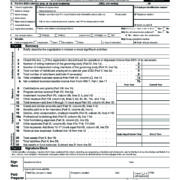Tips For Reading Nonprofit Financial Statements
Nonprofit organizations are structured differently than their for-profit counterparts. Unlike for-profit businesses that mark surplus capital as profit or dividends, nonprofit companies use excess cash flow to pursue and achieve corporate goals. As a result, some of the required financial documentation for nonprofits looks different than statements for other organizations. Understanding some of the similarities and differentiators for nonprofits can ensure you’re prepared to properly log, track, and discern the data for this unique business structure.
Key financial statements for nonprofits include:
I. Statement of Financial Position
A nonprofit’s Statement of Financial Position is similar to a for-profit balance sheet. The statement represents a snapshot at a point of time, as of 12/31/2018. Other key details include:
- Assets = Liabilities + Net assets (equity)
- Assets are what the organization owns or is owed; examples are cash, accounts receivable, prepaid insurance, property
- Liabilities are what the organization owes to others/ has to pay in the future, examples are accounts payable and loans
- Net assets – accumulated earnings/losses
When reading the Statement of Financial Position, it’s important to know if the organization has enough assets to pay liabilities in the both short/long term, focusing first on whether it holds enough short-term assets to pay short-term liabilities.
II. Statement of Activities
Also similar to a for-profit income statement, the Statement of Activity:
- Provides a snapshot of the activity for a period of time, such as for the year ending 12/31/2018
- Outlines how the organization generates income (service fees, donations, investment income, grants)
- Shows how the organization spends its money (expenses)
As you work through the Statement of Activities, identify how the expenses relate to the income and if the organization relies heavily on just a few donors/sources of income.
III. Statement of Functional Expenses
The Statement of Functional Expenses for nonprofits shows expenses by function (including single or multiple programs), management, and admin and fundraising. Like the other sheets, this statement represents a snapshot at a point of time, such as for the year ending 12/31/2018. When examining the Statement of Functional Expenses, it’s useful to:
- Compare resource used by each program or function
- Identity how program expenses relate to program service fees
- Determine relationship between the three functions
IV. Statement of Cash Flow
A nonprofit’s Statement of Cash Flow outlines a specific period of time, such as for the year ending 12/31/2018, and is broken into three sections:
- Cash generated/used in operating activities
- Cash generated/used in investing activities
- Cash generated/used in financing activities
Nonprofit Financial Statements: What Else To Know
As you work through the nonprofit’s financial statements, always read included footnotes; these annotations can provide detail and context beyond listed statement data. Additionally, some financial statements include supplemental schedules that include extended information, often by program or location. Finally, whenever possible, develop financial ratios that show the relationship between accounts, and compare current data to prior year, budget, and similar organizations for a full-scope analysis of the nonprofit’s current financial standing.










